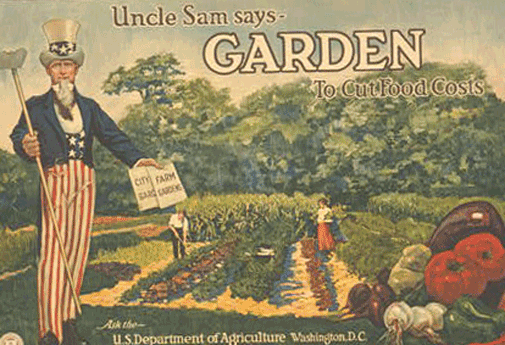 One of the latest trends in the landscape world is the “Edible Lawn”. Not a new concept, people have actually grown food in any portions of there yard for centuries, but purely out of necessity. Now as the “green” movement spreads into the corners of even the laggard’s radar, edible front lawns are sporadically popping up in neighborhoods throughout the country.
One of the latest trends in the landscape world is the “Edible Lawn”. Not a new concept, people have actually grown food in any portions of there yard for centuries, but purely out of necessity. Now as the “green” movement spreads into the corners of even the laggard’s radar, edible front lawns are sporadically popping up in neighborhoods throughout the country.
At first glance I love the concept. I’m a want-a-be naturalist so anytime I see people living off the land it inspires me do the same. There are several reasons for the re-emergence of the trend, everyone and there brother going green, nothing wrong with that, raising food prices spawning theories of an approaching global food shortage, which will make growing our own food a necessity, and simply many jumping on a new trend.
 And in this lies the problem. No matter how much I like the idea I fear this particular aspect of sustainable landscape might have come too soon, and has exposed itself to trendiness. You might ask, “Well, what’s wrong with that, as long as it’s positive”? I would say nothing, only trends have a way of imploding on themselves due to those joining don’t always understand the true reason for doing so, and without true conviction in what it is their doing, will take an alternate or easier route, further distancing themselves from the true purpose for growing one’s own food source.
And in this lies the problem. No matter how much I like the idea I fear this particular aspect of sustainable landscape might have come too soon, and has exposed itself to trendiness. You might ask, “Well, what’s wrong with that, as long as it’s positive”? I would say nothing, only trends have a way of imploding on themselves due to those joining don’t always understand the true reason for doing so, and without true conviction in what it is their doing, will take an alternate or easier route, further distancing themselves from the true purpose for growing one’s own food source.
I also have a bad habit of becoming a devil’s advocate, even on issues in which I believe in just to spur conversation. So, I hope I’m wrong and the trend grows in to something greater. This takes me to another thought, the growing revolt against lawns. Again, as one who loves the natural wild, I've looked at perfectly manicured lawn in disgust thinking, “how dare they.”
 But after playing a bi-annual 40+ over round of golf on a pristine golf course, I had to ask myself, why do we love this? Because I did, the rolling clean cut hills of green, stripped of every single weed was calming and peaceful. Turf grass is not native to the US, brought over from England in the late 18th century by those wishing to replicate that same rolling country hillside feel to the states. So was it this psychological effect that has made Americans lawn obsessed?
But after playing a bi-annual 40+ over round of golf on a pristine golf course, I had to ask myself, why do we love this? Because I did, the rolling clean cut hills of green, stripped of every single weed was calming and peaceful. Turf grass is not native to the US, brought over from England in the late 18th century by those wishing to replicate that same rolling country hillside feel to the states. So was it this psychological effect that has made Americans lawn obsessed?
One could argue a number of reasons. Naturally grocery stores make a full yard of crops a possible unnecessary chore. Or, could it be a lack of creativity or desire to define one’s inhabited space, and the simplest thing to do is lay down some Kentucky Blue?
 I guess this whole lawn/no lawn/edible lawn issue has me analyzing our current residential landscape about how we got here and where we’re going. Being in the Landscape Architecture field, there’s nothing I’d love more then to see a vast interest of harmonizing one’s individual landscape with natural surroundings. I think to get there we need to acknowledge that we’re here, we have unavoidable impacts, and to educate ourselves on what landscape design can do to minimize those impacts.
I guess this whole lawn/no lawn/edible lawn issue has me analyzing our current residential landscape about how we got here and where we’re going. Being in the Landscape Architecture field, there’s nothing I’d love more then to see a vast interest of harmonizing one’s individual landscape with natural surroundings. I think to get there we need to acknowledge that we’re here, we have unavoidable impacts, and to educate ourselves on what landscape design can do to minimize those impacts.
I’d love to hear your thoughts, ideas, and experiences.














